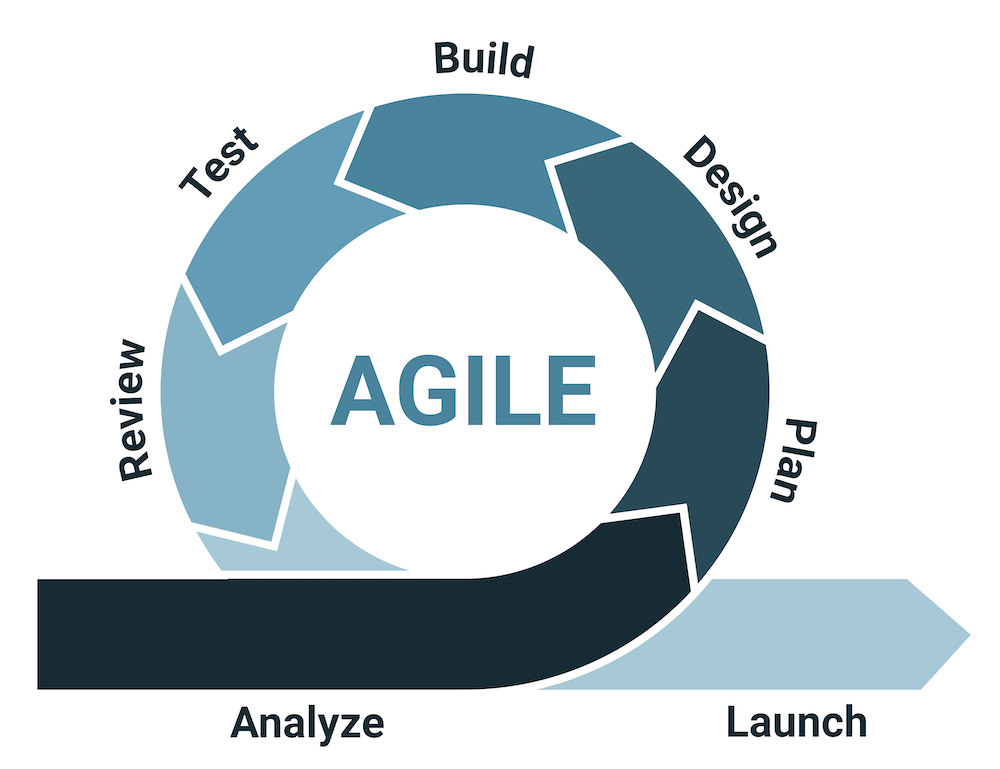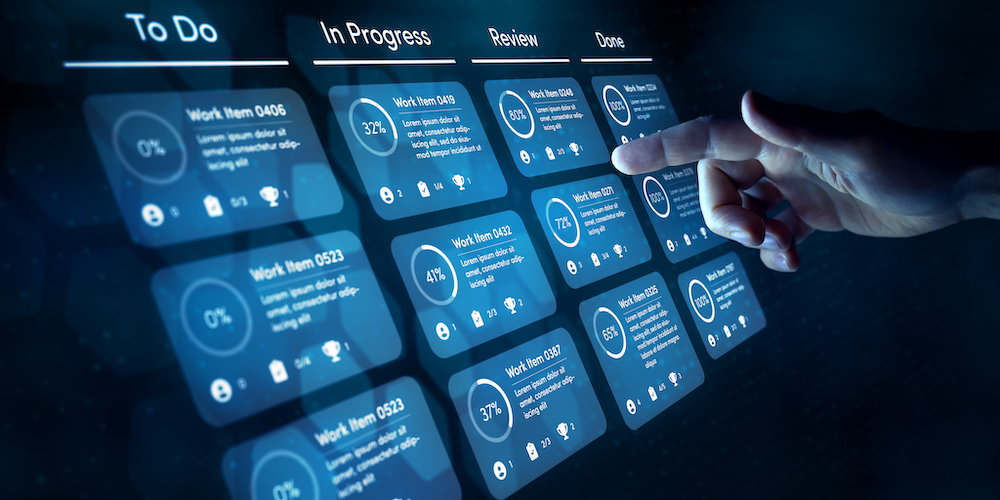Organizations undergoing digital transformation are constantly looking for the next solution that keeps them competitive in their market. As demand grows, these companies need to develop more products, better and faster. Agile methodologies are one way software organizations are meeting market demands head-on—but many product manufacturers are struggling to make the same advancements. Fortunately, new tools are bringing Agile methodologies to traditional product development and giving companies a competitive edge.
Adapting Agile principles for physical product development is vital to staying competitive while meeting market demands.
What Is Agile Product Development?
The idea of Agile development isn’t new—however, using Agile development to create physical products is. The methodologies originating in the Agile Manifesto focused on software creation, but they are now being adapted for manufactured products. Regardless of the output, though, Agile follows 12 guiding principles:
- Satisfy customers with early and continual delivery of value
- Welcome changing requirements
- Deliver working products frequently
- Collaborate and communicate regularly
- Build projects around motivated individuals
- Communicate face-to-face (or in real time) whenever possible
- Working versions measure progress
- Promote and maintain a sustainable pace
- Stay focused on technical excellence and good design
- Keep it simple
- The best work emerges from self-organizing teams
- Regularly reflect on how to be more effective
What Does the Agile Product Development Process Look Like?
Agile methodology is an iterative approach to project management in which teams build products using short iterations that enable frequent feedback and rapid improvement. Unlike traditional approaches, such as Waterfall, Agile methods focus on speed, flexibility, collaboration, and steady feedback. Teams regularly work together to reevaluate requirements, progress, and results so they can adjust as often as needed.

The Agile product development process is divided into 1- to 4-week sprints (iterations) that each begin with a cross-functional planning meeting. Each sprint is a small project that applies the entire product development process. Once the sprint is over, teams present to stakeholders, gather feedback, and iterate.
How Is an Agile Product Development Process Different than Waterfall Development?
The main difference between Agile and Waterfall development is how planning and execution occur. In Waterfall, project steps are completed in order—the next step doesn’t begin until the prior one is finished. In contrast, with Agile, projects are split into sprints, which encourages ongoing improvement and testing. The core differences can be broken down as follows:
| Agile | Waterfall |
| Flexible Approach | Rigid Approach |
| Continual Testing | Final Testing |
| Frequent Deliveries | End-of-Project Delivery |
What Are the Benefits of Agile Product Development?
Agile methods for product development offer a host of benefits. Here are the top three:
1. Optimize Distributed Workflows
Cross-team collaboration is an essential component of Agile methodologies. People with different expertise and perspectives come together to provide feedback and guide product design in a way that makes the most sense. By bringing together engineers, product designers, marketers, and customers, teams gain valuable insights much earlier in the process.
What’s more, in today’s distributed workflows, Agile’s flexible structure capitalizes on employee expertise, whether co-located or time zones apart.
2. Reduce Risk with Transparent Communication
Another core element of Agile is wide-open communication. This is not only between team members, but also cross-functionality among stakeholders, customers, and more. This collaborative communication uncovers issues so teams can address them at key stages—instead of waiting until the end.
By completing the frequent checkpoints inherent in Agile (daily meetings, stakeholder feedback sessions, and real-time collaboration), it’s much easier to sidestep potential problems and reduce risks associated with your deliverable.
3. Deliver Incremental Value
Another main goal in Agile is to deliver a working product. In the case of hardware, that definition can be pretty broad. To adapt this core principle to physical product development, it’s not about delivering a final product, but instead focusing on incremental value that pushes toward the overall project goals. This can be as simple as completing smaller tasks to stay on a timeline or producing a larger part or iteration.
Delivering incremental value in a physical product means offering transparent progress toward the larger goal.

How Do You Implement Agile Product Development?
Agile product development actually makes a lot of sense. While it may not seem immediately feasible to iterate as often as Agile requires, with the right tools it is. That’s why many manufacturers have assigned Agile as a software tool. It’s all about adapting—the basic Agile principles may not be directly applicable to hardware, but they can be modified to fit your operations.
Agile product development processes seem much more feasible when considering sprints as just different stages of the traditional development lifecycle. While software releases are the deliverables in the traditional Agile sense, for hardware, measurable progress can be enough.
Getting Started with Agile Product Development
Before going Agile, you first need an innovative solution that can adapt to the Agile method.
Advanced real-time simulation, such as Creo Simulate Live, makes it possible to simulate early and often in the design process. This feeds into ongoing improvements and iteration—before creating costly physical prototypes. And this incremental progress is at the heart of Agile Principle #7.
Ensuring a single source of truth in product development is critical for clear communication. Windchill PLM makes it possible for distributed teams to work based on the same information throughout the product development process and the entire product lifecycle. This streamlined data source supports Agile Principle #6: ensuring clear synchronous communication between all team members.
Ultimately, PTC’s suite of products is designed to help manufacturers create better products faster. Agile product development processes make businesses more resilient, innovative, and efficient. The result is a superior product that satisfies more consumers.
Need help determining which solutions will best support your Agile product development efforts? Contact us and we’ll put you in touch with an expert.
